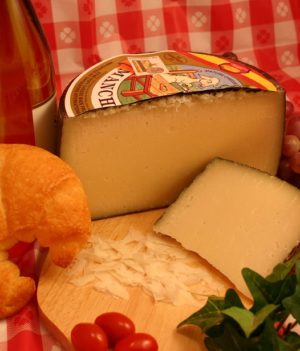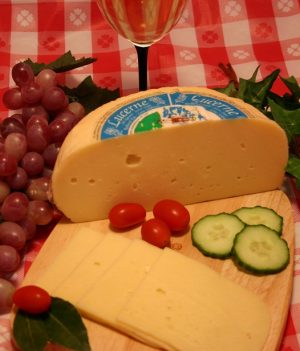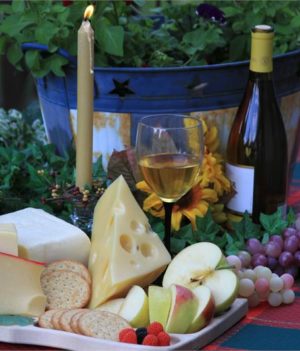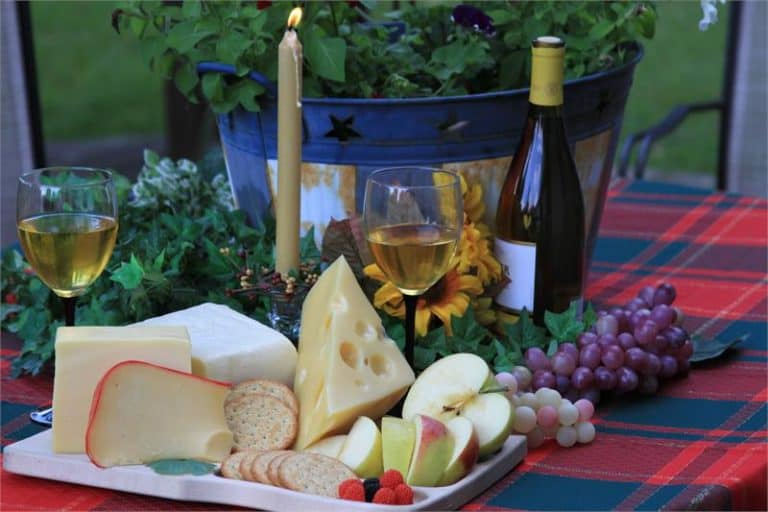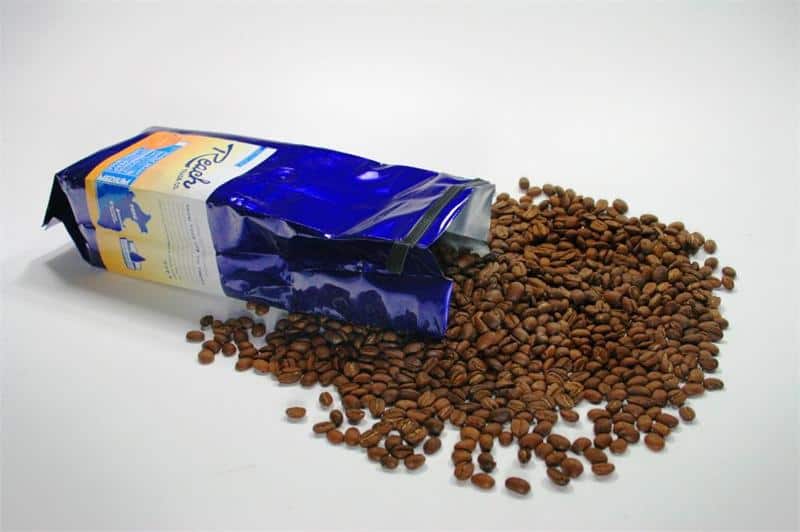Month: October 2019
Happy Halloween from us!
Happy Halloween to all of our wonderfully ghostly customers! We hope you have a very spooky day indeed. We’ve put together a few of our favorite ideas for making Halloween fun.
1. Carving Pumpkins
Of course, pumpkin carving is the classic decoration for Halloween. We absolutely love to make our own designs! Traditional faces are easy to carve, but there are so many online tutorials that can help you to create intricate designs that are sure to impress trick or treaters! Do remember to be careful of any open flames when the pumpkins are lit and to keep the pumpkins away from places where people could injure themselves.
Make sure that you don’t waste the actual pumpkin flesh. It’s delicious roasted as a side dish or cooked into a warming soup for cold evenings. Try using a cookie cutter to cut bread shapes such as ghosts or bats for a fun addition to your soup. You can even roast the seeds with different flavors like salt, chilli, or caramel for a quick crunchy snack. Why not try a pumpkin mac and cheese to warm you up?
2. Spooky Baking
We love to get into the kitchen and create something delicious for Halloween!
Spider Cookies
This recipe is lots of fun to make. Get the whole family involved to create a fantastic treat. Use your favorite cookie recipe or even pre-bought dough to make a big batch of cookies. Melt white chocolate and use it to pipe a web onto the cookies. The easiest way to do this is to pipe on concentric circles and then use a cocktail stick to pull the circles into a web shape. Leave this to set. Then melt milk chocolate and pipe on your creepy spiders. You could even add icing eyes or create your own using candy.
Witch’s Hats
Cut puff pastry or pre-made crescent rolls into the shape of witch’s hats. Decorate with a strip of Colby cheese as a ribbon. You could even use sweet or savory filling to make them into pies. Try pumpkin, cream cheese or melted chocolate for fun seasonal flavors.
3. Decorations
If you want to make sure that trick or treaters visit you, then some decorations will send the message that you are happy to meet them. Of course, your pumpkins will light the way but there are some other ways that you can decorate your home.
Floating witch’s hats
Use fishing line to hang witch’s hats in your porch for a fun decoration that can be seen by your neighbors. You could even use battery powered fairy lights or glow sticks to make them light up so that they can be seen at night. Make sure that they are hung up high so that no-one walks into them!
A Halloween tree
You can now find artificial Christmas trees in a huge range of colors, including black and white. Pick one of these up and decorate it as a Halloween tree. There are lots of spooky ornaments available in the shops and online. Add some cobwebs, skulls, and spiders for a truly creepy tree. You can even get orange tinsel or pull out any dark colored Christmas decorations to add some extra sparkle.
How are you celebrating Halloween? Let us know in the comments below! Have a spooky day!
Cheese Glossary: The Letters N and O
We return to our cheese glossary for the letters N and O!

Natural
A general term for cheese that has been made directly from milk, whether it is pasteurized or unpasteurized. It can also refer to the cheesemaking process itself of coagulating or curdling the
milk, stirring and heating the curd, draining the whey and collecting or pressing the curd.
Natural Rind
A rind that forms naturally on cheese whilst it is drying and ripening. Ripening agents or washing are not used to create the natural rind. Most semi-hard and hard cheeses will have this, including Parmesan and Romano Pecorino.
Nutty
Cheeses with a nut-like flavor, such as Swiss cheeses.
Oily
This can describe the body, flavor or aroma of a cheese.
Open
A term applied to cheese varieties containing small holes that develop during the manufacturing process. These holes may be small or large, densely patterned or randomly scattered, and irregular in shape. Air might be introduced through punctures made with steel pins, such as in the production of blue-veined cheeses. These pin holes are not the same as the open ‘eyes’ that form during fermentation of cheeses such as Swiss cheese.
Organic
Grown without the use of chemical pesticides or fertilizers.
Overripe
A cheese that has gone past its best. It has likely become too soft.
Ovolini
A ball of fresh mozzarella, weighing approximately four ounces.
Oxidation
This can cause cheese to become bleached or dry, depending on how it has been packaged.
We have come to the halfway point of our cheese glossary and we are really enjoying teaching you all about the different terms associated with cheese. We hope it is helping you to learn more about the cheeses that you love. What would you like to learn about next? Let us know in the comments below and we will make it the focus of our next set of posts!
Cheese Glossary: The Letter M
Another letter for our cheese glossary today!
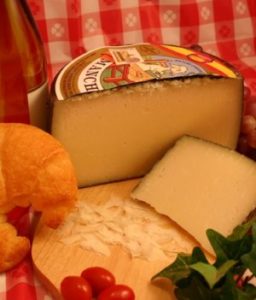
Manchego
Manchego is a sheep’s milk cheese from Spain. The shape of Manchego cheese is very characteristic and defined. It has an intense taste and crumbly texture which makes it perfect for eating alone. It has a rich golden color and small holes. It is traditionally made with grass molds so it has a very distinctive zigzag pattern on the cheese. It appears as a herringbone pattern n the rind, which is inedible.
The rich, semi-firm product is aged in natural caves for two to six months, giving it a zest and exuberant flavor. It is always aged for a minimum of two months. There are significant changes in the flavor over time and sometimes in Spain, you will see it served in a variety of ages.
Manchego cheese is made in the La Mancha region of Spain. It has a long historical and literary tradition, as it was mentioned by Cervantes in the legendary “Don Quixote of La Mancha”.
It is made from the whole milk of the Manchega sheep, which are only bred in the La Mancha region. Archaeological remains show that a cheese like Manchego may have been made as far back as the Bronze Age.
Marbled
Marbled cheese is usually a blend of Monterey Jack and Colby cheese, marbled together to create a striking effect. Monterey Jack is a buttery, semi-firm cheese that originated in California. It is usually only aged for around a month, making it a fresh, fairly soft cheese to enjoy.
Medium-aged
A semi-hard or hard cheese that has usually been aged for three to six months.
Mozzarella
Mozzarella is a semi-soft cheese. Due to its high moisture content, it is traditionally served the day after it is made, but can be kept in brine for up to a week or longer when sold in vacuum-sealed packages.
Derived from the Neapolitan dialect spoken in Campania, mozzarella is the diminutive form of mozza (“cut”) or mozzare (“to cut off”) derived from the method of working. The term is first mentioned in 1570, cited in a cookbook by Bartolomeo Scappi, reading “milk cream, fresh butter, ricotta cheese, fresh Mozzarella, and milk”.
Citric acid and milk are combined and then heated until the mixture is ready to have rennet added. At this point, the curds and whey will have separated and the curds will be cut. They are the removed, stretched and kneaded until they become the cheese that we recognize.
Muenster
Muenster cheese is a mild, white cheese with a reddish-orange rind made from paprika. This can be eaten but is often cut off. It is semi-firm in texture with a mild smell that stronger as it ages. Muenster cheese is currently made in Germany, France, and the United States. It was originally made by Benedictine monks that migrated to the Alsace region of France. The cheese was created to save milk and feed numerous people. The original name “munster” comes from the word monastery. Authentic French Muenster cheese is made from the milk of cows that graze in the Vosges mountains of eastern France. Today, farmers still use traditional methods of cheese-making.
Are you enjoying learning about cheese? Let us know in the comments!
Cheese Glossary: The Letter L
It’s time to return to the cheese glossary. Onto the letter L!
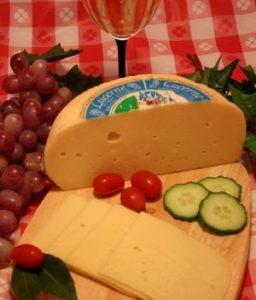
Lactose
A type of sugar found naturally in milk.
Lacy Swiss
Lacy Swiss was invented by Alpine Lace Brands in 1985 in response to the growing need for healthier alternatives. This cheese is closely related to Swiss cheese, but the whole milk used to produce swiss cheese is replaced with low fat milk to provide a healthier alternative with a lower fat content. It gets its name from the lacy appearance of the slices, which usually have a creamy, ivory color to them. It has a delightfully light and nutty flavor. If you follow a lactose-free diet, then this cheese is naturally free of lactose.
Lacy Baby Swiss
Lacy Baby Swiss is a young, semi-soft cheese distinguishable by its myriad of small holes. Baby Swiss is made by substituting water for the milk’s whey to slow bacterial action compared to a traditional Swiss Cheese. The Lacy version has smaller holes and a milder flavor, as well as the lower fat and sodium content found in Lacy Swiss.
Limburger
Limburger is rated as one of the stinkiest cheeses in the world! It is a spreadable cheese with an almost bitter flavor. A rind washed cheese, it has a distinct brown-colored rind with semi-soft, ivory cheese inside. It can be quite mild but it also has a distinct grassy and mushroom taste. The aftertaste has a tang to it.
The bacteria Brevibacterium linens causes the odor and the maturing process which creates Limburger. When it is young it has a firm, crumbly texture with a salty flavor, like feta. At six weeks, the edges soften but the center stays firm. By two months it is almost all smooth and creamy and by three months it develops its intense smell and flavor. Limburger originated in the historical Duchy of Limburg, which is now divided between modern-day Netherlands, Belgium, and Germany. However, most Limburger today comes from Germany. Only one company in the United States still makes it, the Chalet Cheese Cooperative of Monroe, Wisconsin. We’re proud to source our Limburger Cheese from Wisconsin.
Lipolysis
This refers to a process that takes place during cheesemaking. Milk contains a fat (or lipid) called triglyceride. Using enzymes called lipases, the fatty acids in triglyceride are separate from the glycerol. They become free fatty acids that have taste and aroma. Without this process, cheese would be incredibly bland.
Lucerne
Lucerne Cheese is a young, semi-soft cheese with small holes, somewhat similar to Baby Swiss. It has a very mild flavor that is both light and smooth. It’s also lower in fat and sodium than Swiss cheese, making it a delicious favorite for those counting calories or watching their sodium intake.
Is there anything else you would like us to define in the cheese glossary? Let us know in the comments!
How to Choose Wine Glasses: Part 2
After part 1, where we explained the different parts of a wine glass and how to choose the right material for your glasses, we return with part 2.

How to Choose Wine Glasses: White Wine
White wine glasses usually have a small bowl which helps to preserve the floral aromas and bring out the acidity of the wine. The smaller glass also helps to maintain the cool temperature necessary for the enjoyment of white wine. The lighter the wine, the smaller the opening of the glass should be to make the ‘finish’ of the wine slower.
How to Choose Wine Glasses: Red Wine
Red wine should be served in a larger glass with a wider mouth. This directs the wine towards the tongue ready to taste it and delivers the aroma to your nose without the strength of the alcohol. The wider opening also makes it taste smoother. The largest glasses are best with a bold red wine such as a Cabernet Sauvignon or Bordeaux. These are usually called Bordeaux glasses. Smaller red wine glasses may be used for lighter wines such as a Pinot Noir. These are often called Burgundy glasses.
The large bowl of the glass directs the wine towards the tongue ready to taste it. Red wine glasses are also taller than a white wine glass as this maximizes the flavor. A Bordeaux glass delivers more aroma to the nose without the strength of the alcohol and the wider opening makes it taste smoother. Sometimes spicy red wines may be served in a smaller glass as the flavors are softened when they hit your tongue more slowly.
Sparkling Wine Glasses
A sparkling wine is usually served from a tulip-shaped glass or flute. This is because the upright, narrow glass retains the carbonation and flavor of the drink. Flutes create a steady stream of fizz and preserve the bubbles in the wine. A tulip-shaped glass or a narrow-mouthed white wine glass will usually help you to enjoy the aroma and taste of the wine more.
Rose Wine Glasses
As rose is similar to white wine, it is acceptable to serve rose wine in a white wine glass. However, there are specific glasses that are more suitable for rose wine. Generally, a short bowl with a slight taper or a flared lip is the best for these wines.
The flared lip allows the wine to run out of the bowl straight onto the tip of the tongue. This is where our taste buds are most sensitive to sweet tastes, which you will find many of in rose wines. A more full-bodied rose wine can be served without the flared lip.
Dessert Wine Glasses
When serving dessert wines and fortified wines such as Port, a small glass with a narrow mouth is best. This reduces the evaporation of high alcohol wines. As these wines are extremely sweet, the small glasses direct the wine towards the back of the mouth which avoids an overwhelming sweetness. The smaller glass is also more suitable for such a high level of alcohol.
We hope this is helpful to you when you’re selecting wine glasses. Let us know if you have any questions in the comments!
How to Choose Wine Glasses: Part 1
How to choose wine glasses can seem like something of a mystery. When shopping, we are presented with so many options that it can seem overwhelming. If you need help to decipher which glasses are right for you, you’ll want to read on.
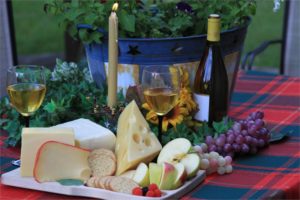
Why do I need to know how to choose wine glasses?
The right glassware will enhance the experience of tasting wine and elevate a glass at dinner time to something that you can really savor. Firstly, a good wine glass means that you can see the color of the wine properly. This is the first thing that you examine when tasting wine, along with swirling it to see the sugar content. It will also allow the aroma of the wine to be released properly and give you space to enjoy it. Whether you have selected the right glass will depend on both the size and the material of the glass. Today we will help you to select the right material.
How to Choose Wine Glasses: Know the Parts
There are four main parts of a wine glass. Knowing the style that you are looking for in your wine glasses can help you to make a great choice.
The foot of the glass is the base that allows it to stand upright. The stem is where you hold the glass. It stops your hands from warming the wine and avoids smudges on the glass. The bowl is the actual cup of the glass. This is where the most variation exists between wine glasses because the different sizes are suitable for different wines. The rim of the wine glass is important because it enhances the experience of drinking the wine. A thin rim that is smooth to the touch will let the wine flow out of the glass easily.
How to Choose Wine Glasses: Buying the Right Material
A variety of materials are used to make wine glasses (yes, not just glass!).
- Crystal – this is very strong and can, therefore, be spun into very thin glassware. This creates a smooth rim and refracts the light well, which helps you to better enjoy the colour of your wine.
- Lead Crystal – known to have the best light-refracting properties for true wine appreciation.
- Durable Crystal Blends – blending crystal with materials such as magnesium makes it less fragile.
- Acrylic – whilst these are not technically glass, this can be a great option for taking outside during the summer.
- Glass – this is more durable than crystal and is a cost-effective option for wine glasses, but it will usually have a thicker rim.
Deciding what material is right for the wine glasses in your home largely depends on how you will maintain your glasses and how they will be used. If they are for occasional use and you are happy to hand wash them, then the crystal is a great choice. However, if you want to pop your glasses in the dishwasher because they will be for everyday use, then a durable crystal blend can give you the luxury of crystal with the convenience of glass.
Join us later in the week when we’ll explain how to choose wine glasses for different wines.
Cheese Glossary: The Letters I, J and K
We’re bringing you three letters from the cheese glossary today: I, J and K!
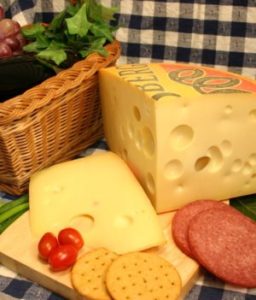
Industrial
This refers to cheeses that are made using highly automated manufacturing processes. The milk for the cheese will often come from multiple farms rather than from a single origin.
Inoculation
Adding starter cultures to milk to begin the cheesemaking process. Starter cultures can include mesophiles and thermophiles. Thermophiles perform at a higher temperature than mesophiles.
Intense
A cheese with strong, concentrated aromas and flavors.
Interior Ripened
A cheese where the ripening occurs evenly throughout the entire cheese. The aging process begins in the center and makes its way to the outer edge. These can include hard cheeses such as Cheddar as well as soft cheeses like Brie.
Jarlsberg
The famous Jarlsberg cheese of Norway is known for its distinctive sweet and nutty taste, and of course, those large, round holes. This versatile cheese is ideal for cheese trays, sandwiches, grating, and for use in all types of recipes. As early as the 1830s there was active production of unique cheeses with holes in the Laurvig and Jarlsberg county in the South of Norway. In 1956 Professor Ole M. Ystgaard from the Agricultural University of Norway began doing research on these cheese recipes, recognizing the value of this type of cheese. During his research he developed a semi-hard, medium-fat cheese with large holes, successfully combining the cheese-making traditions with modern technologies. The new cheese was named Jarlsberg Cheese after the county where the earlier version had been made during the 19th century.
Jumping Jack
A marble-based cheese with a mix of jalapeno and habanero peppers added to give it a spicy kick.
Kaas
The Dutch word for cheese.
Kase
The German word for cheese.
Kashta
A very creamy cheese originating from the Middle East. It is sometimes baked or simply eaten with honey. This cheese is almost a dessert!
Kefalotyri
A traditional Greek-Cypriot cheese made from sheep milk and/or goat’s milk. It is a very hard cheese with a sharp flavor and dry texture. It is sometimes aged for more than a year to create a strong cheese.
Kefir
A fermented milk drink. It resembles a thin yogurt. This is made using kefir grains, a type of mesophilic symbiotic culture which ferments the milk. Sometimes kefir is then used to make cheese. Both kefir and cheese made from the drink are a source of a wide range of probiotics.
We’ll be back with more from the cheese glossary soon. In the meantime, why not try a new cheese from our wide selection? Let us know which you pick and whether you enjoyed it in the comments below!
Happy International Coffee Day!
It’s International Coffee Day today!

An estimated 3 billion cups of coffee are consumed every day around the world. We know that lots of you are true coffee lovers so we’ve put together some ideas to help you celebrate this fun day.
Did you know that coffee beans are actually the seeds of the coffee plant? They are the pit inside the red or purple fruit that looks like a cherry. Usually, there are two seeds within each fruit. The cherries are usually dried for some time in the sun before the seeds are removed. These are then roasted and become the coffee beans that we buy, grind, and make into coffee!
Coffee is now produced in over 50 countries around the world, with the majority coming from South America.
International Coffee Day: Celebration Ideas
- We’re starting on a serious note, but it’s an important one. Head to the International Coffee Day website to find out more and to pledge your support for a living wage for coffee farmers. Coffee prices are currently at their lowest point in 15 years and millions of coffee farmers now struggle to make a living or support their families. It’s up to all of us to make a difference to how we buy coffee so that everyone can live a better life.
- Also on the International Coffee Day website, you can find a fun quiz to test your knowledge of coffee.
- If you’re a chocolate lover, why not try our recipe for Coffee Chocolate Truffles?
- Check out our blog posts on all the different types of coffee and how to make them at home. Whether you love an Americano or a Macchiato, trying making it your way today!
- Get a new reusable cup. Lots of us around the world are trying to reduce our waste and a great place to start is with ditching single use coffee cups. You can grab a reusable mug from a wide variety of stores both in store and online. Many coffee shops will offer you some money off your drink for helping to save the planet!
- Try our Shisler’s Cheese House Coffee Mug. If you’re at home, then we’ve created a mug that lets you proudly show off as one of our customers. Perfect for a quick coffee before work in the morning or a cosy afternoon with a book.
- Have a coffee with some cheese! This might surprise you, but Limburger Cheese is sometimes served with a strong black coffee. It has such a strong taste and aroma that it is best paired with an even stronger drink. If you try it, let us know what you think in the comments below!
- If you drink coffee every day, take a simple moment to appreciate all the effort that went into your cup.
We proudly stock REACH coffee. This is specialty grade coffee from the region of Chanchamayo, Peru that is roasted in Cleveland, Ohio. You can order online or pop in to buy some today.
How will you be celebrating International Coffee Day? Let us know; we’d love to hear all about it!


